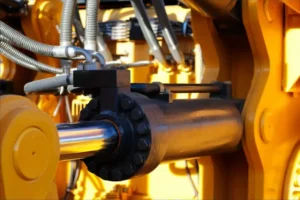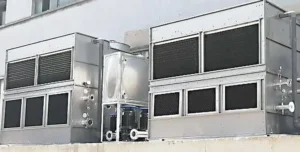
ইন্ডাকশন ফার্নেসগুলি তাদের দক্ষতা এবং পরিবেশগত সুবিধার কারণে দস্তা গলানোর ক্ষেত্রে ক্রমবর্ধমানভাবে গুরুত্বপূর্ণ. This article delves into the technology, advantages, operational processes, and future trends of using induction furnaces for zinc smelting.
Technical Principles of Induction Furnace Zinc Smelting
Induction furnace zinc smelting operates on electromagnetic induction and the thermal effect of electric currents. When alternating current flows through the induction coil, it creates an alternating magnetic field, inducing a strong current in the crucible, rapidly heating and melting the zinc. The relatively low melting point of zinc (about 419.5°C) allows for efficient smelting in induction furnaces.
Advantages of Induction Furnace Zinc Smelting
- High Efficiency and Energy Saving: Induction furnaces heat quickly and efficiently, reducing energy consumption and heat loss, thereby improving smelting efficiency.
- Environmentally Friendly: They produce minimal waste gas and slag, which are easy to manage. Advanced environmental measures, such as bag filters, can further reduce emissions, aligning with green production standards.
- Ease of Operation: Automated control systems in induction furnaces simplify operation and allow for precise control, enhancing production efficiency and reducing operator labor.
- High Metal Quality: Uniform heating reduces oxidation and impurities, increasing the purity and quality of zinc.
Operational Process of Induction Furnace Zinc Smelting
The process typically involves:
- Preparation: Loading zinc raw materials (যেমন, zinc ingots, granules) into the furnace and preparing auxiliary materials (যেমন, ammonium chloride).
- Preheating: Gradually heating the metal to just below its melting point.
- গন্ধ: Fully melting the zinc, with adjustments to furnace temperature and power as needed.
- Refining: Adding refining agents (যেমন, ammonium chloride) to remove impurities and gases.
- কাস্টিং: Pouring the molten zinc into molds to produce ingots or zinc alloy products.
Future Trends in Induction Furnace Zinc Smelting
- Larger Scale and Higher Efficiency: As demand for zinc smelting increases, induction furnaces are becoming larger and more efficient, boosting production capacity.
- Intelligence and Automation: Advances in mechatronics and computer control are leading to more intelligent and automated induction furnaces, offering precise control, remote monitoring, and fault diagnostics.
- Environmental Protection and Energy Saving: Future developments will focus on optimizing furnace designs, enhancing thermal efficiency, and using eco-friendly materials to reduce energy consumption and emissions.
- Multi-functionality: Induction furnaces will expand beyond zinc to smelt other metals, thanks to modular designs and multifunctional configurations, catering to various industry needs.
In conclusion, induction furnace zinc smelting offers significant advantages in efficiency, environmental impact, and ease of operation, making it a key technology in the industry. As technology advances and applications broaden, induction furnaces will play an increasingly crucial role in the sustainable development of zinc smelting.







